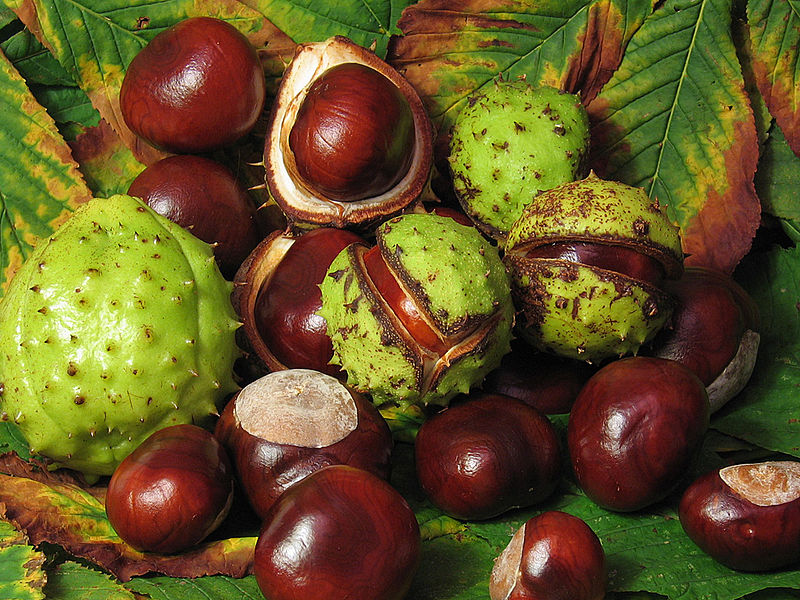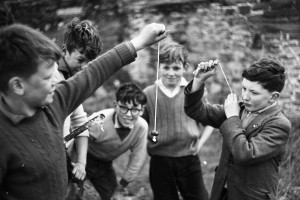I recently spent my first fall back in Blighty after 18 years, and I’d forgotten how distinctive the English autumn feels. For me it will always be the season of conkers, with their shiny polished-wood skins glistening in the piles of fallen leaves and their smooth round forms nestling snugly in the palms of little hands. But why are they called conkers?
The red-brown fruits of the horse-chestnut tree (similar to the Ohio buckeye of North America) have been threaded with string by British children to play their game of “conkers” for nearly two hundred years. The traditional schoolyard play-off — in which kids try to hit and break their opponent’s conker with their own — dates back to the mid-19th century, when it started out being played with snail shells. But which was named first: the tree-nut, or the game? The OED explains that conker was a dialect word used to describe the original shell on the string, giving rise in its plural form to the game itself. Conker might have come from the word conch (naming another spiral-shelled mollusk), but it was more likely associated with — and in fact frequently spelled as — “conquer” in the 19th and early 20th centuries, as in the verb meaning “to win”. The game was also sometimes known as “conquerors,” and that seems to confirm its etymology rooted in triumph rather than a nickname for nature’s gifts.
Where did the name horse chestnut come from? According to the Online Etymology Dictionary, it’s from the “1590s, from horse (n.) + chestnut. … Said to have been so called because it was food for horses, “but this is appar. a mere guess” [Century Dictionary] and the sense is perhaps “large,” as in horseradish. The nut resembles that of the edible chestnut but is bitter to the taste.”
* Aesculus hippocastanum is the botanical name for the horse-chestnut tree.
* * *


